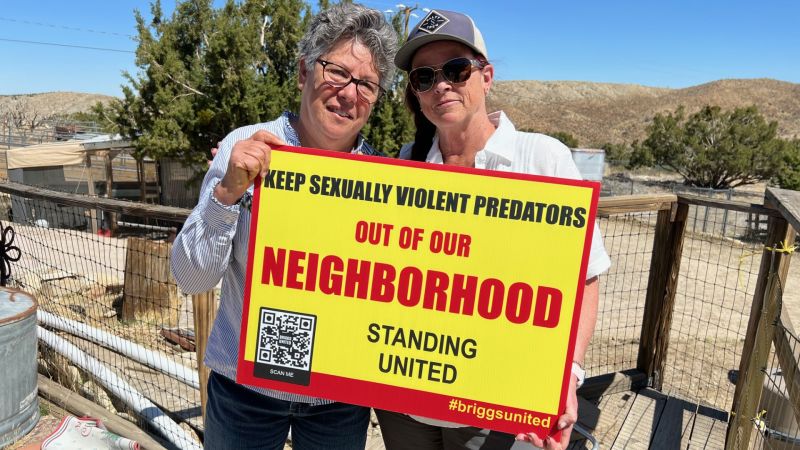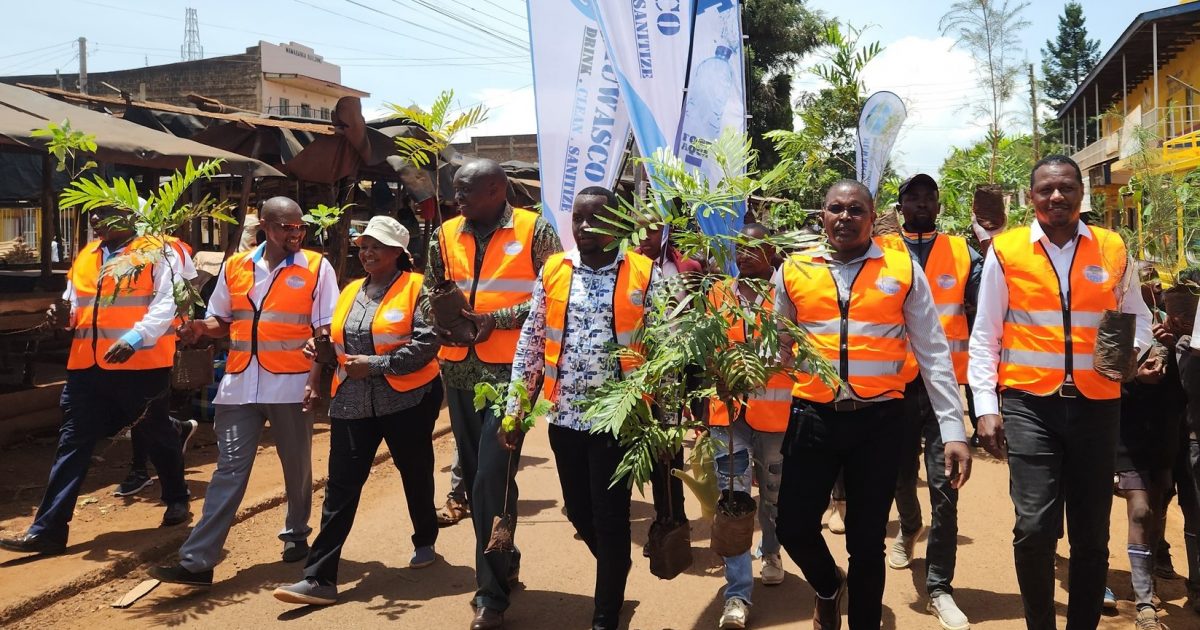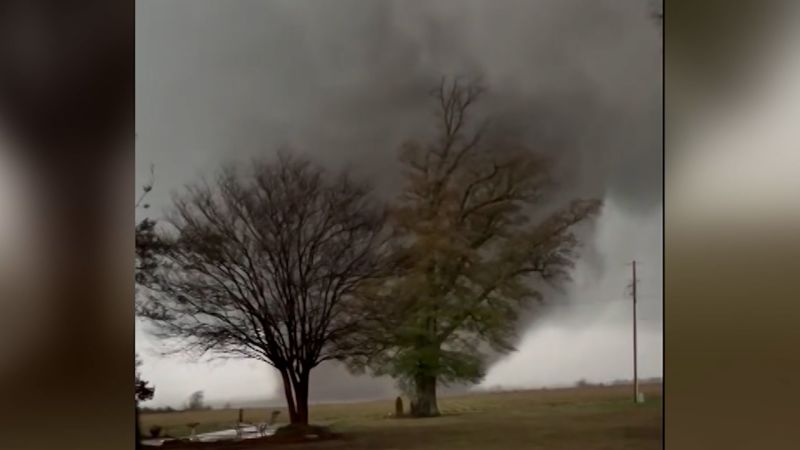
Editor’s Note: This story contains description of sexual assaults. To reach Diane Swick’s rural California homestead, you have to drive 70 miles north of Los Angeles and traverse a rocky road best suited for an ATV. Few come here without a good reason.
But a man dubbed the “Pillowcase Rapist” had no trouble getting to Pearblossom — in fact, he got a court-mandated escort to the community nearly two weeks ago. Christopher Hubbart, 73, is now Swick’s next-door neighbor. “We are women and that’s his prey,” Swick said.

The 61-year-old had heart surgery last year and says she was depressed when she first heard Hubbart was coming. “Now I’m mad,” she told CNN from her back porch, within eyeshot of Hubbart’s rented home. “I’ve never had to lock my doors for the 28 years I’ve lived here, and now that’s been taken away from us.
” Hubbart’s release has reignited a debate over how the state should handle the most extreme sexual offenders in its custody, including those like Hubbart who attacked again after serving multiple sentences. Hubbart was charged with dozens of sexual assaults dating back to the 1970s and spent seven years in a state mental hospital after pleading guilty to one count of rape and three counts of sodomy. Court records show he was released in 1979 to an outpatient program in the San Francisco Bay area, and “within a few months” sexually assaulted about 15 women after breaking into their homes.
He would “bind the victim’s hands, cover her head, and commit forcible sex acts,” court records allege. In 1982, he was sentenced to 16 years in prison and released in 1990 after serving about half of his time. Once free, he raped again.
“Within a two-day period, Hubbart attempted to sexually assault one woman and actually assaulted another,” court records state. His parole was revoked, and he was returned to prison. Until last month, he was held in a state hospital awaiting placement into a home as part of California’s “Sexually Violent Predator (SVP) Conditional Release Program.
” It’s designed for predators in state hospitals “to safely transition back to being a fully functional member of the community,” according to a fact sheet from the California Department of State Hospitals (DSH). “I have no problem with someone who has gone to prison, done their time and paid their debt to society,” said Linda Adams, who lives across the street from Hubbart. “But how can you pay a debt for (that many) rapes? It’s not something that just goes away.
” Rachel Purcell lives down the street from Hubbart’s new home and says she now walks with bear spray. “Any male Caucasian that I see coming up to me, I’m going to be wary,” she told CNN. “And if he gets within 30 feet of me, he’s getting sprayed.
” It’s not just residents who are irate. Politicians have voiced opposition since last September when the Antelope Valley was identified as Hubbart’s next home by Liberty Healthcare, a state contractor that oversees SVP cases. “A man who has admitted to raping over 40 women and suspected of raping dozens more is not fit for release or community reintegration at any level,” wrote Los Angeles County Supervisor Kathryn Barger in a letter to the Superior Court .
The district attorney’s office also opposed the move. Hubbart did not respond to a letter sent from CNN prior to his release from the Coalinga State Hospital. Outside his new home, a representative from Liberty declined to submit CNN’s request to speak with Hubbart.
A Liberty spokesperson referred all questions to DSH. Hubbart is now neighbor to a mix of about two dozen suburban-style homes and dusty ranches, flanked by the San Gabriel mountains, where many enjoy the peace and pitch black of a country night. “It’s the whole reason I moved up here,” Purcell said.
But that isolation now seems like a liability, she admits, as the nearest law enforcement station is at least 15 miles away. “Half of us don’t have reliable cell (service) at all,” Adams agreed. “Our landline goes out frequently, and there’s no urgency in repairing it.
If (Hubbart) approached my property none of my neighbors would hear me if I needed assistance.” A ‘dumping ground’ for predators Neighbors here don’t dispute that Hubbart’s release happened through proper legal channels. The 1996 Sexually Violent Predator Act allows for treatment and rehabilitation for SVPs who have completed their prison sentence.
In Hubbart’s case, a Santa Clara County court first deemed him suitable for release from a state hospital in 2014. Placement into his current home has been approved and overseen by a Los Angeles County judge — even if some residents scoff at the process. “The judge said he would make the decision based on whether he would put (Hubbart) across from his own family,” Adams said.
“So, he must hate his family.” The case played out in a mental health court in hearings livestreamed to the public. However, the case files remain sealed.
In its fact sheet on the SVP program , DSH says a court can only approve conditional release when it has determined “the individual would not be a danger to the health and safety of others in that it is not likely that the person will engage in sexually violent criminal behavior due to the person’s diagnosed mental disorder if under supervision and treatment in the community.” It continued that treatment was given after someone seeking release had completed their criminal sentences. “In making its determination, the court generally considers treatment records, assessments, and information provided by mental health professionals and forensic evaluators.
” Others who live in this high desert section of the county say what stings even more is that this is the third sex criminal released to this region. The Los Angeles County District Attorney, Nathan Hochman, accused the state of treating the Antelope Valley as a “dumping ground” for sexually violent predators. DSH countered, telling CNN it must legally consider factors like proximity to schools and parks, which “significantly limit(s)” suitable options to “outside of dense, urban areas.
” In an email, the department said: “DSH does not place individuals designated as SVP into the community until a court has determined it is safe and appropriate to do so. It is also the court that ultimately approves the placement location.” That’s not good enough for Mary Jeters, a local resident who operates the Facebook page “No SVP’s in the Antelope Valley.
” “My frustration has gone past the point where I’m going to scream about it,” Jeters said. She disputes the notion that rural areas equate to safer locations. “These SVPs are not going to be restricted to being in their house all the time,” Jeters said.
“They bring them out to go to doctors’ appointments, they go shopping. People don’t know who they’re standing next to in line, you don’t know who’s talking to your daughter.” Citing patient privacy laws, DSH declined to speak specifically about Hubbart’s case but confirmed there are several safeguards at the home of any released prisoner placed in the community.
They include 24-hour GPS monitoring, covert surveillance, unannounced and scheduled home visits, and advanced approval — including routes of travel — for scheduled outings. “The close supervision is there to guard against the individual committing any new crimes,” DSH said in a statement. Security cameras are also visible at Hubbart’s home and residents say a private security guard has been posted at the home around the clock.
“They’re just watching that we don’t bother him,” said Purcell, a neighbor, adding her view was that “the security is to protect him, not to keep him locked up.” Jeters said some residents have been the target of restraining orders by other former inmates in the area who felt harassed, but that the goal is to protest peacefully. She held a public gathering Sunday on vacant land next to Hubbart’s new home.
“I just don’t trust that he can be trusted,” Jeters said, noting this is Hubbart’s second attempt at a successful release in the area. The first came in 2014, but two years later Hubbart was sent back to a state hospital for violating his release terms. DSH declined to confirm details of the violation, again citing privacy laws.
In 2016, Hubbart’s former parole officer praised his return to custody. “Christopher Hubbart is a waste of a human heart,” John Bays, then retired, told the Los Angeles Times . “He never should have gotten out.
” Swick, the next-door neighbor, wonders why this time would be any different. She feels her community is being piled on and that in addition to safety issues, the neighborhood has been affected by depressed property values in the wake of 2020’s Bobcat fire . “We lost our barn, we lost a tractor, we lost a shed.
And I would much rather go through a fire than what’s going on here,” Swick said. “This sense of not knowing what’s going to happen. Nobody wishes a fire on anybody, and I feel this is worse.
” ‘The state should do its job’ Los Angeles County is not the only area dealing with backlash from the SVP conditional release program. Just over 160 miles to the south of the Antelope Valley, in Borrego Springs, residents were informed in February by the sheriff that another rapist, Alvin Ray Quarles, was being placed in their community. Quarles served time for multiple rapes in the San Diego area dating back to 1988.
“Now that there’s two or three sexually violent predators in that small community of 3,000 people, with one grocery store ...
how do you protect that community?” asked Republican state Senator Brian Jones of San Diego. Jones believes sex criminals should only be released to structures such as prefab homes on state-owned and operated land. “Outside the perimeter of a state institution.
.. in a fire camp, any other area that the state is responsible for the safety and condition of that area,” Jones said.
But in its statement to CNN, DSH said placing released inmates on state-run property would not fulfill its legal obligation under the SVP Act to “safely reintegrate” individuals so they can achieve “unconditional release.” Jones wants to change the law. He’s proposing two state Senate bills that would ultimately force DSH to sign off on placement locations selected by its contractor, Liberty.
“It basically puts it back on the desk of the director of state hospitals and holds (them) accountable,” Jones said. The bills passed a Senate public safety committee Tuesday though a similar proposal from Jones failed last year. Among the opposition at a committee hearing last April was lawyer Michael Aye, who has represented sexual predators seeking release through the system.
He worried a new law would stifle the program altogether. “Our fear is that..
. giving the director (of state hospitals) the responsibility, that no one will be authorized release,” Aye told the state Senate standing committee on public safety . “Very few make it through, it’s hard to do.
” Those that do make it through to community placement have first spent “an average of 12 years or more” working toward successful completion in the hospital, DSH told CNN. State audit figures also show fewer crimes committed by people in the SVP release program. Of 56 participants in the last 21 years, two were convicted of criminal acts.
The same audit found that of 125 sex criminals released unconditionally by the courts, 24 were convicted of subsequent crimes. Jones, the state Senate minority leader, says the state’s current procedure ignores common sense. “It’s not fair for a community, a mom and a dad, a grandma and grandpa, to live next door to these monsters, and be responsible for keeping an eye on them,” he said.
“That’s the state’s job and the state should do its job.”.















